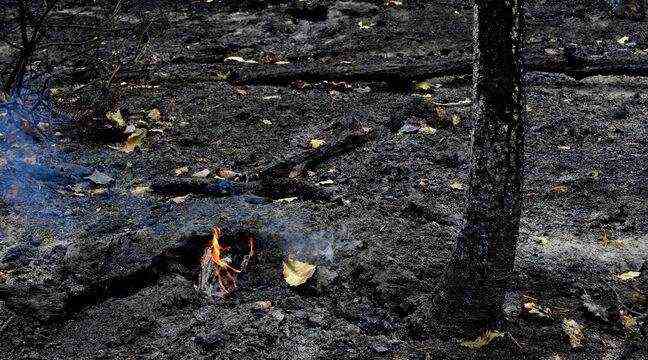Interior Minister Gerald Darmanin and Minister of Ecological Transition Barbara Pompili presented on Friday during a visit to the Var, the new national system for fighting forest fires. A reinforced plan for the summer in the face of “fires which intensify with climate change and affect more and more regions”. This device will be located in the southern zone, the most affected by these disasters.
But the teams are intended to intervene throughout the country, especially in the Landes massif, considered vulnerable, and even in the center and the north, more and more affected by the summer fires, underlines the government. “Historically, our country is configured for reinforcements going from north to south, but today the entire territory is concerned,” explains the spokesperson for the National Federation of Firefighters (FNSPF), Eric Brocardi.
An intervention in ten minutes
Civil security has therefore strengthened the firefighting system in the northern half by installing three new pelicandromes – aerodromes where firefighting devices can land and take up water in particular – in Méaulte (Somme), Châteauroux and Angers, said Commander Alexandre Jouassard. In total, 19 water bombers and helicopters, three reconnaissance planes and up to 2,500 firefighters and rescuers will be mobilized every day to fight against these fires, said the spokesperson for Civil Security, the Commander Jouassard.
“The objective is to have a first intervention ten minutes after each start of fire”, he explained to the press. The two ministers also paid tribute during a solemn ceremony at the military camp of La Vaguine, in Draguignan, to the victims of forest fires, civilians and personnel engaged in the security corps.
Risk linked to global warming
Since 2010 in particular, climate change has regularly caused prolonged heatwaves which increase the risk of fire in all regions. Even though this summer doesn’t seem a priori not carrying “major risks”, “we remain vigilant”, noted the spokesperson for Civil Security. In France, the last two summers had seen high levels of burnt areas: 17,400 hectares in 2020 (including 11,400 of forest), after 23,500 hectares in 2019.
However, this remains well below the years of heatwaves and historic fires (73,000 hectares in 2003, more than 80,000 in 1976). But ultimately, “in 2050, half of the country’s wooded areas could be affected by a high risk of forest fires”, with “more intense droughts” and widespread risks “to the north and west”, according to Commander Jouassard. This phenomenon is already visible in several European countries, with fires which affected Sweden two years ago and Siberia last year. And this week, forest fires are also on the rise in western Canada and the United States following record temperatures.
One in two fires is linked to human intervention
In France, one in two fires is linked to human intervention (malice, recklessness, negligence), according to the government, which recalls that beyond the forests, “roadsides, agricultural land, wasteland, , the scrublands, the maquis, etc. are also areas sensitive to the outbreak of fires ”and create risks for the homes and forests that border them.
Among the precautions to follow: do not barbecue or fire near plants, do not throw cigarette butts in the forest, on the ground or through a car window, do not use tools liable to cause sparks ( grinder, grinder, brush cutter, welding station etc.), or at the cooler hours of the day, and finally do not store fuel near homes.

